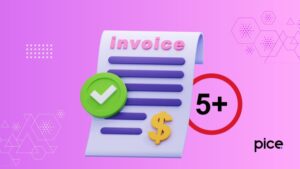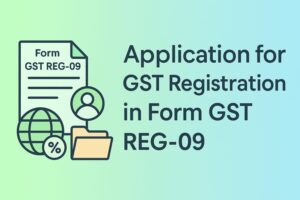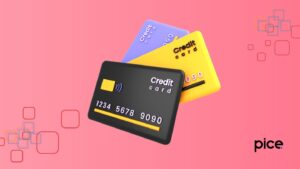GST Rate on Footwear
- 17 Sep 24
- 11 mins

GST Rate on Footwear
Key Takeaways
- The GST rate on footwear varies based on type and price, significantly impacting pricing and supply chain dynamics in the industry.
- Accurate classification using the correct SAC codes is essential for proper GST compliance and claiming input tax credits in the footwear sector.
- GST registration is mandatory for footwear businesses with turnover exceeding the prescribed threshold to legally operate and claim input tax credits.
- Filing of GST returns, including quarterly and annual returns, is crucial for claiming input tax credits and ensuring compliance in the footwear business.
- GST affects various aspects of the footwear industry, including costing, pricing, and the supply chain, influencing business profitability and consumer pricing.
The impact of GST on the footwear industry has been significant, influencing pricing, supply chain dynamics, and overall business operations. The footwear industry, comprising various types like leather sports shoes, handmade footwear, and waterproof footwear, now operates under a more structured tax regime with clear tax slabs and rates.
What is the SAC Code for Footwear?
The SAC (Services Accounting Code) for footwear helps in identifying services related to footwear for GST purposes. This includes repair services, maintenance of footwear, and the sale of footwear, classified under specific codes to streamline tax administration. For example, footwear made from different materials like leather, textile, or rubber have distinct SAC codes to specify their tax treatment. The SAC code system ensures that businesses correctly categorize their products and services to apply the correct GST rate. For instance, leather sports footwear, textile materials footwear, and removable insoles have their own codes that need to be accurately used for invoicing and tax compliance.
Understanding the correct SAC code is crucial for footwear businesses, suppliers, and service providers, as it impacts the rate of GST applicable to their products. Misclassification can lead to incorrect tax payment or even penalties. Therefore, footwear suppliers and traders must be diligent in using the appropriate SAC codes when filing GST returns. Proper classification also plays a role in the reconciliation statement, which ensures that the outward supplies reported by the business align with the GST rates applicable. In essence, the SAC code helps in bringing uniformity and transparency to the footwear industry under the GST regime.
GST Registration for Footwear
GST registration for footwear businesses is mandatory if the business's aggregate turnover exceeds the prescribed threshold, which varies depending on the state and nature of the business. Businesses with turnover above the threshold are required to register under GST to legally operate and conduct the sale of footwear. This includes footwear suppliers, traders, manufacturers, and service providers engaged in the footwear industry. The process of GST registration involves providing business details, PAN, bank account information, and other relevant documentation to get a GSTIN (GST Identification Number).
💡 If you want to pay your GST with Credit Card, then download Pice Business Payment App. Pice is the one stop app for all paying all your business expenses.
GST registration allows footwear businesses to issue GST-compliant invoices, collect GST on sales, and claim input tax credit on purchases. For example, when a footwear supplier purchases raw materials like leather or textiles, they pay GST on these inputs. With GST registration, they can claim this input tax credit to reduce their tax liability on outward supplies, ultimately impacting the footwear costing.
Registered footwear businesses must adhere to GST compliance requirements, such as timely filing of GST returns. This includes quarterly returns and an annual return, which detail the business's turnover, outward supplies, and input tax credit claimed. Failing to register or comply with GST regulations can lead to penalties, affecting the business’s operations and financial health. GST registration ensures that businesses operate transparently and within the legal framework, fostering a more organized footwear market.
GST Return Filing for Footwear
GST return filing for footwear businesses involves periodic reporting of sales, purchases, and the GST collected and paid during a specific period. Businesses engaged in the sale and supply of footwear are required to file quarterly returns, detailing the outward supplies, tax payments, and input tax credits. Additionally, an annual return must be filed, summarizing the entire year's transactions, including aggregate turnover and reconciliation statements.
The GST rate for footwear varies depending on the price and type of footwear. For example, the rate for footwear costing up to a certain threshold may differ from the rate on footwear priced above that threshold. These variations in GST rates must be accurately reflected in the returns to ensure compliance. The GST return filing process requires meticulous record-keeping, as businesses must account for all transactions, including sales, purchases of footwear, services of footwear maintenance, and repair services.
Filing accurate returns is crucial for claiming GST input tax credit. This credit allows businesses to offset the GST paid on purchases against the GST collected on sales. Proper return filing ensures that businesses can claim this credit without discrepancies, enhancing cash flow and reducing the overall tax burden. Non-compliance or errors in GST return filing can result in penalties and interest, impacting the profitability and operations of the footwear business. Therefore, timely and accurate GST return filing is essential for the smooth functioning of businesses within the footwear industry.
Conditions for Claiming GST Input Tax Credit
To claim GST Input Tax Credit (ITC) on footwear, businesses must meet certain conditions. Firstly, the business must be registered under GST and possess a valid GST invoice or debit note for the purchases. The goods or services must have been received, and the tax on such supplies should have been paid to the government. The claim for ITC can be made only when the input tax is reflected in the GST returns filed by the supplier, ensuring that the tax payment on outward supplies is accounted for.
The input tax credit is crucial for businesses to reduce their tax liability. For instance, when a footwear supplier purchases raw materials like leather or textiles used in manufacturing footwear, they pay GST on these inputs. By claiming the input tax credit, the supplier can offset this tax against the GST collected on the sale of the final product, lowering the overall tax burden. However, if the footwear purchased falls under exempt supplies, ITC cannot be claimed.
Additionally, there are implications on footwear regarding the ITC when dealing with different types of footwear, such as handmade footwear, waterproof footwear, or removable insoles. For example, the rate on footwear cost might differ based on the product type, affecting the amount of input tax credit claimable. Ensuring compliance with the conditions for claiming ITC helps businesses optimize their tax payments and improve their profitability.
When Does GST Become Payable for Footwear?
GST on footwear becomes payable at the time of supply, which is generally the date of issue of the invoice or the receipt of payment, whichever is earlier. This principle helps determine the point at which the tax liability arises. For businesses dealing in the sale of footwear, timely invoicing and record-keeping are essential to accurately determine when GST is payable. The time of supply is crucial, especially when different rates apply based on the type of footwear or its cost.
The rate for footwear can vary depending on factors such as the type of footwear (e.g., leather sports footwear, textile footwear) and its pricing. For instance, the GST rate on footwear priced above a certain amount differs from that on lower-priced items. This differentiation must be factored into the tax calculation at the time of supply to ensure that the correct tax amount is collected and remitted. Additionally, businesses must consider other aspects such as the supply chain and aggregate turnover, which influence their GST liability.
Failure to pay GST at the correct time can result in penalties and interest, impacting the business's financial health. Proper management of the time of supply, tax slabs, and rates ensures that the footwear business remains compliant with GST regulations. This compliance not only avoids legal complications but also promotes transparency and accountability in the footwear industry.
How GST Affects Footwear
The impact of GST on the footwear industry has been significant, altering the pricing structure, supply chain, and overall business dynamics. One of the major impacts is the standardization of the tax rate across different categories of footwear. Previously, the tax rates on footwear varied based on state-level regulations and value-added tax (VAT) structures. With GST implementation, a uniform tax rate has been applied, which varies depending on the price and type of footwear. This uniformity has simplified the tax payment process but has also affected the price of footwear, making some categories more expensive for consumers.
The GST on footwear affects not just the retail price but also the supply chain. For example, businesses involved in the manufacturing and sale of footwear now need to factor in GST at various stages, from purchasing raw materials to the final sale. This has implications for footwear costing, as businesses need to adjust their pricing strategies to account for the GST rate. Additionally, the impact of GST is seen in the compliance requirements, such as quarterly returns and annual returns, which necessitate meticulous record-keeping and reconciliation of outward supplies.
Moreover, the footwear industry has witnessed changes in the way input tax credits are managed, affecting the profitability and cash flow of businesses. With GST among footwear industry players, there is now a need to closely monitor the time of supply, aggregate turnover, and exempt supplies to ensure compliance. Despite some initial challenges, the GST regime aims to create a more organized and transparent market for the footwear industry, impacting various aspects such as businesses with turnover, service providers, and footwear traders.
 By
By 

















